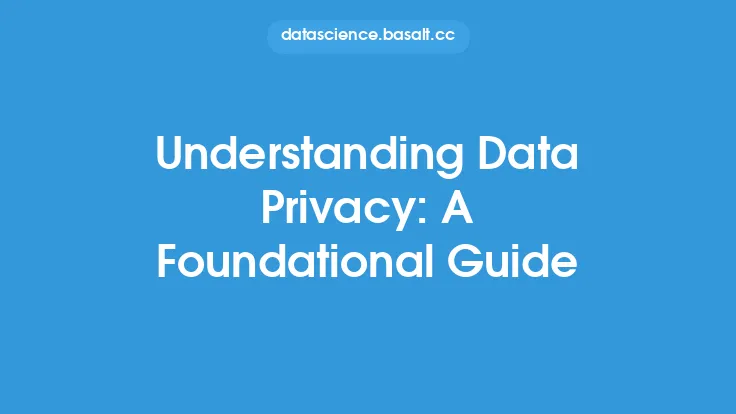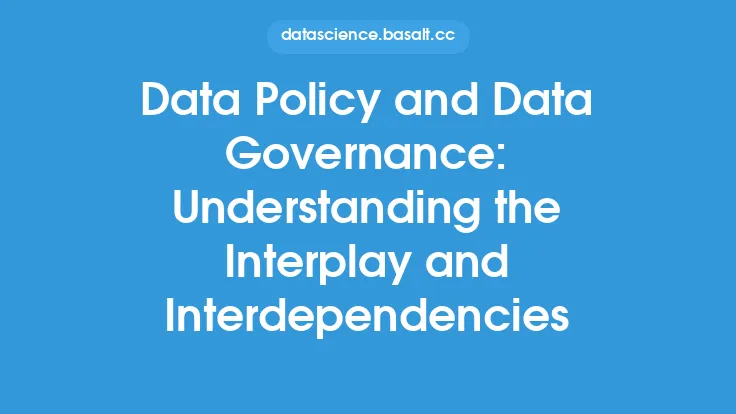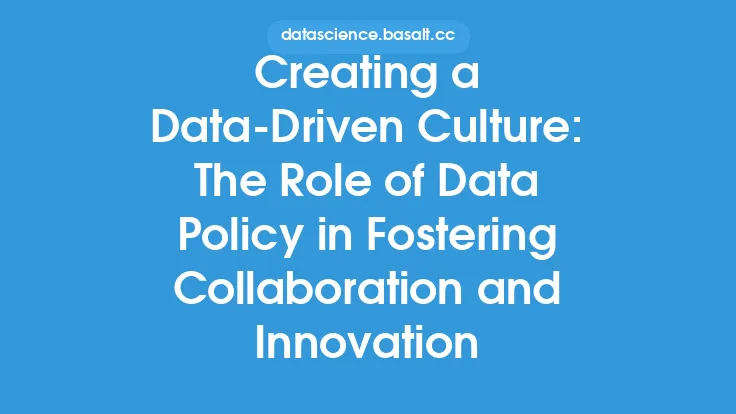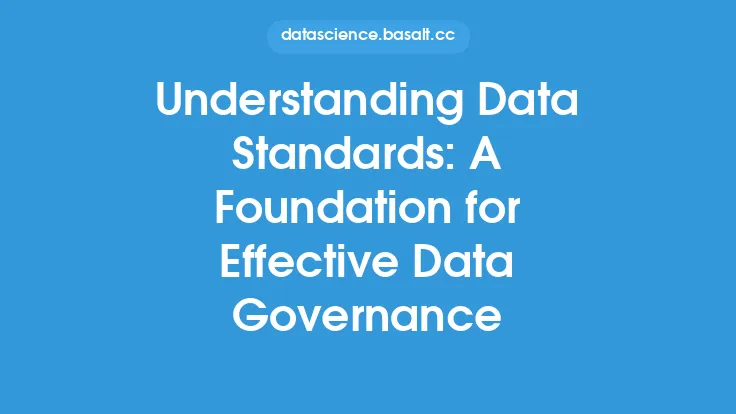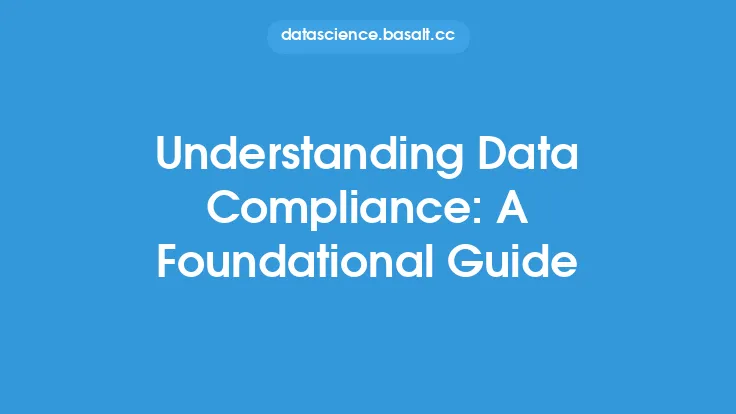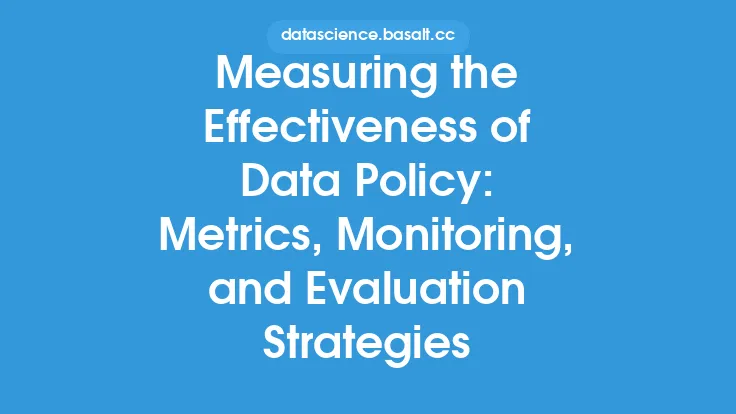Data policy is a critical component of data governance, serving as the foundation for managing and utilizing data within an organization. It encompasses a set of rules, guidelines, and procedures that dictate how data is collected, stored, processed, and shared. A well-crafted data policy ensures that data is handled in a way that is consistent, secure, and compliant with regulatory requirements. In this article, we will delve into the fundamental aspects of data policy, exploring its key elements, benefits, and best practices for implementation.
Introduction to Data Policy
Data policy is often confused with data governance, but while they are related, they are not the same thing. Data governance refers to the overall management of data within an organization, including the people, processes, and technology involved. Data policy, on the other hand, is a subset of data governance that focuses specifically on the rules and guidelines that govern data management. A data policy provides a framework for ensuring that data is accurate, complete, and consistent, and that it is used in a way that is compliant with regulatory requirements and organizational standards.
Key Elements of a Data Policy
A comprehensive data policy should include several key elements, including:
- Data classification: This involves categorizing data based on its sensitivity and importance, and establishing rules for handling and protecting each category.
- Data access controls: This includes procedures for granting and revoking access to data, as well as rules for authenticating and authorizing users.
- Data storage and retention: This involves establishing guidelines for storing and retaining data, including procedures for backing up and archiving data.
- Data sharing and collaboration: This includes rules for sharing data with external parties, such as partners or vendors, and procedures for collaborating with other organizations.
- Data security: This involves establishing procedures for protecting data from unauthorized access, theft, or damage, including rules for encryption, firewalls, and intrusion detection.
- Compliance and regulatory requirements: This includes procedures for ensuring that data management practices comply with relevant laws and regulations, such as GDPR, HIPAA, or CCPA.
Benefits of a Data Policy
Implementing a data policy can have numerous benefits for an organization, including:
- Improved data quality: By establishing rules for data collection, storage, and processing, a data policy can help ensure that data is accurate, complete, and consistent.
- Enhanced data security: A data policy can help protect data from unauthorized access, theft, or damage, reducing the risk of data breaches and cyber attacks.
- Increased compliance: A data policy can help ensure that data management practices comply with relevant laws and regulations, reducing the risk of fines and penalties.
- Better decision-making: By providing a framework for managing and utilizing data, a data policy can help organizations make better decisions, drive business growth, and improve customer satisfaction.
- Improved collaboration: A data policy can help facilitate collaboration and data sharing between different departments and organizations, driving innovation and improving business outcomes.
Best Practices for Implementing a Data Policy
Implementing a data policy requires careful planning, execution, and ongoing monitoring. Here are some best practices to consider:
- Establish a data governance team: This team should be responsible for developing, implementing, and enforcing the data policy.
- Conduct a data inventory: This involves identifying and categorizing all data assets within the organization, including sensitive and confidential data.
- Develop a data classification scheme: This involves categorizing data based on its sensitivity and importance, and establishing rules for handling and protecting each category.
- Establish data access controls: This includes procedures for granting and revoking access to data, as well as rules for authenticating and authorizing users.
- Provide training and awareness: This includes educating employees on the importance of data policy and the procedures for managing and utilizing data.
- Monitor and enforce compliance: This involves regularly monitoring data management practices to ensure compliance with the data policy, and taking corrective action when necessary.
Technical Considerations
Implementing a data policy also requires careful consideration of technical factors, including:
- Data architecture: This involves designing a data architecture that supports the data policy, including procedures for data collection, storage, and processing.
- Data security technologies: This includes implementing technologies such as encryption, firewalls, and intrusion detection to protect data from unauthorized access, theft, or damage.
- Data management tools: This includes implementing tools such as data governance platforms, data quality tools, and data analytics platforms to support data management and utilization.
- Cloud and hybrid environments: This involves considering the unique challenges and opportunities of cloud and hybrid environments, including procedures for managing and securing data in these environments.
Conclusion
In conclusion, a data policy is a critical component of data governance, providing a framework for managing and utilizing data within an organization. By establishing rules and guidelines for data management, a data policy can help ensure that data is accurate, complete, and consistent, and that it is used in a way that is compliant with regulatory requirements and organizational standards. By following best practices and considering technical factors, organizations can implement a data policy that drives business growth, improves customer satisfaction, and reduces the risk of data breaches and cyber attacks.
